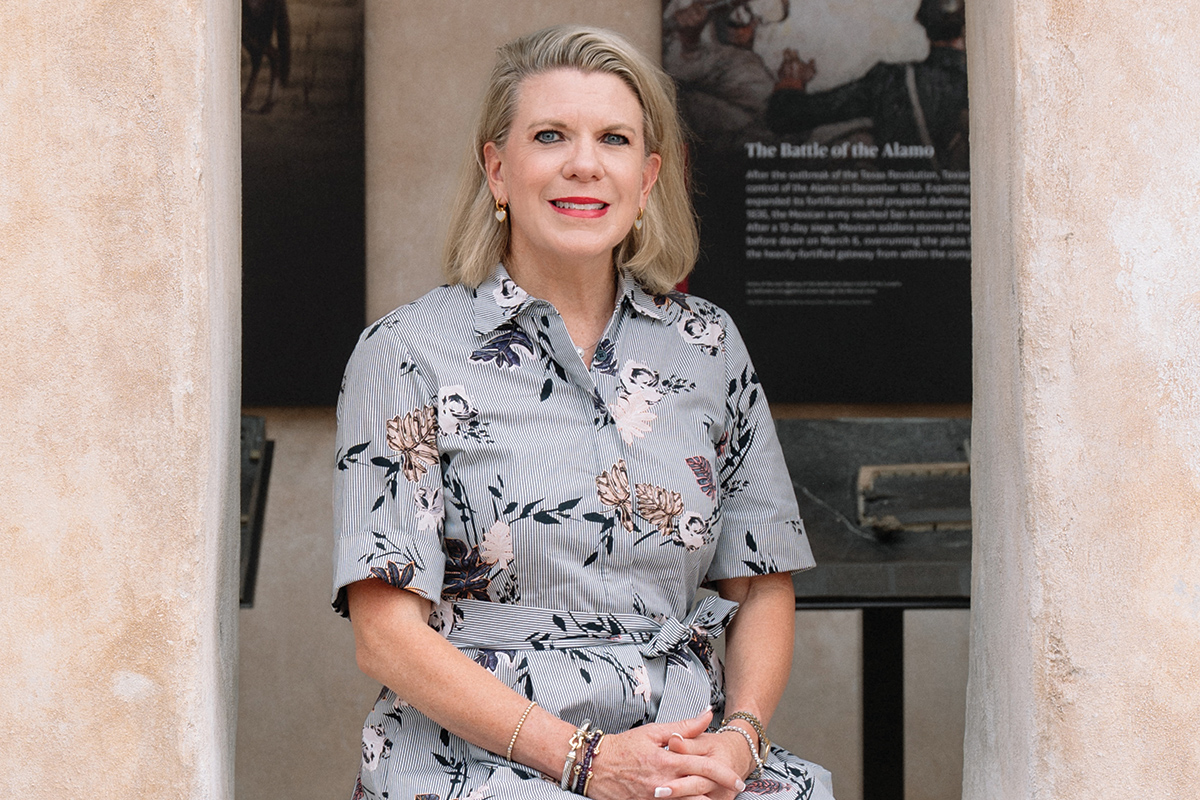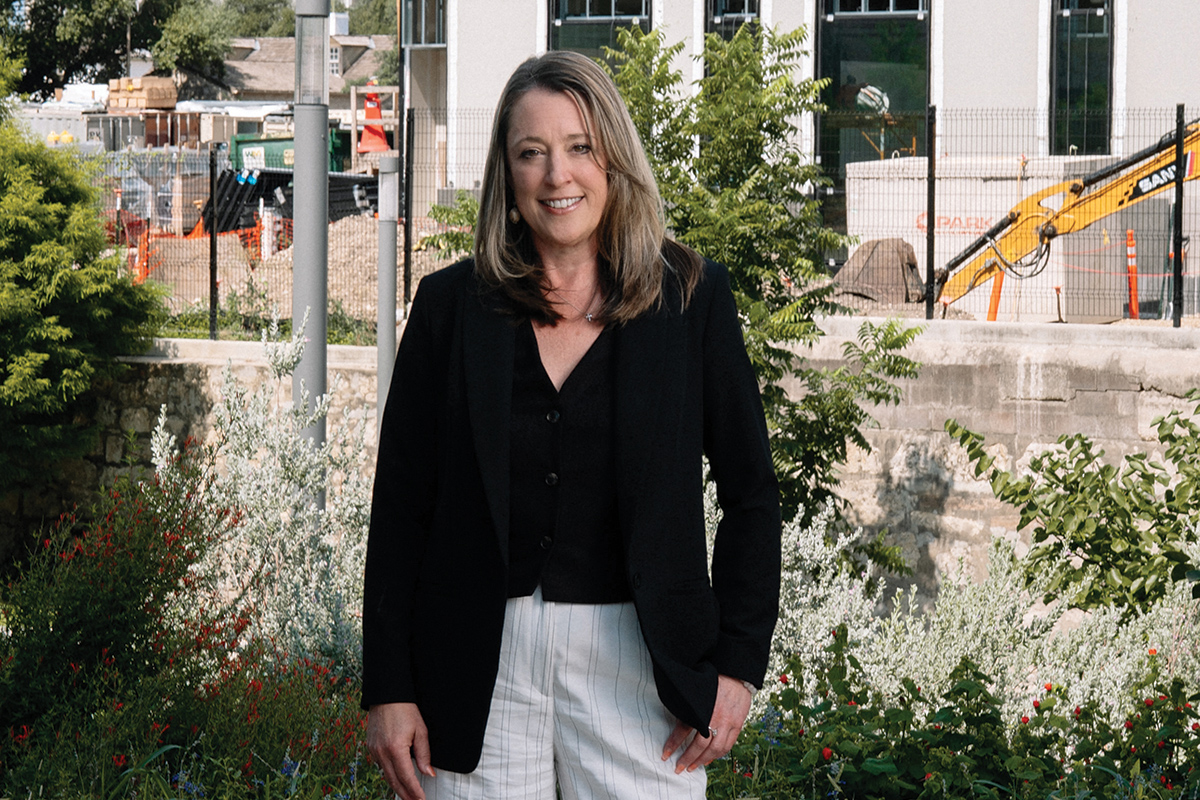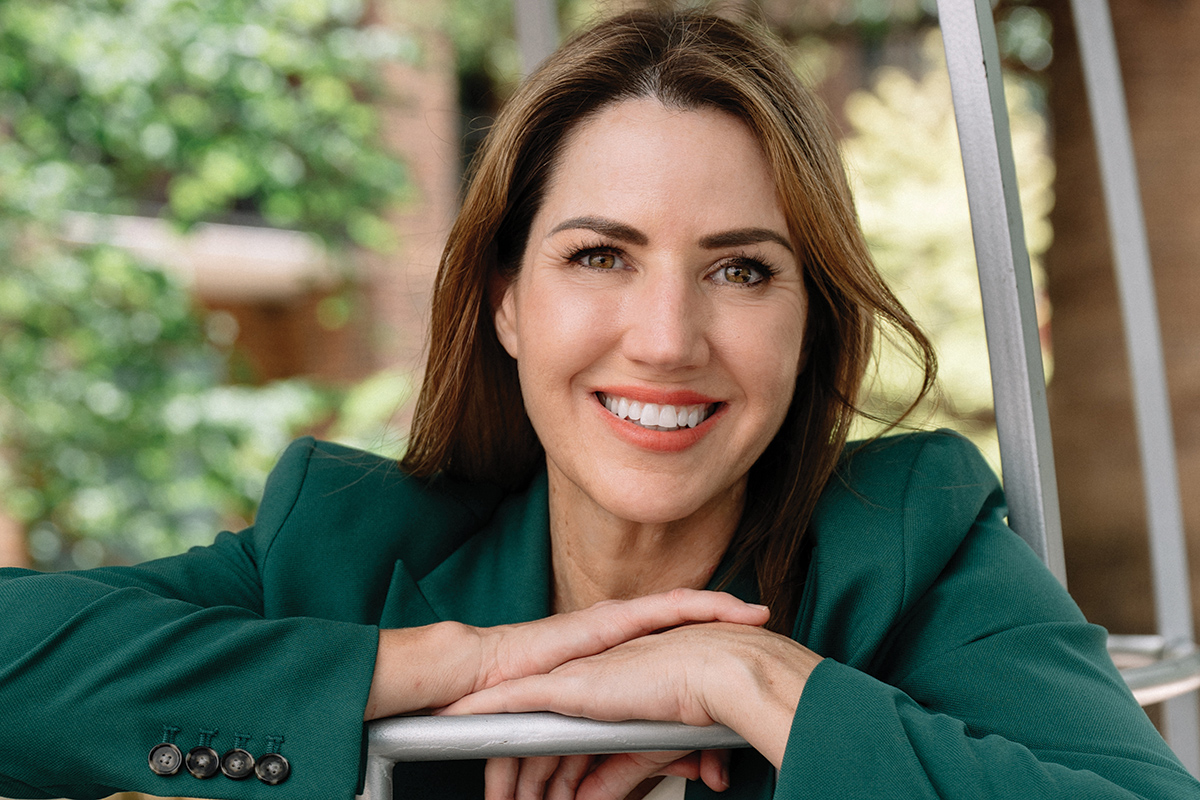
Shaping Downtown
By Michelle Vasquez | Photography by David Teran
To visitors who hear mention of San Antonio, the iconic Alamo often comes to mind. But to locals, the Alamo reflects the growth and community that has shaped the city around it. The spirit of collaboration and vision is being carried forward by three leading women: Kate Rogers, Executive Director of the Alamo Trust and Foundation; Corrina Green, Vice President of Real Estate at UT San Antonio; and Lori Houston, Assistant City Manager. Together, they are influencing our city’s future, footprint, and skyline by building engagement and community.

Kate Rogers
Executive Director of the Alamo Trust and Foundation
The Spirit of the Alamo Past and Present
Building community requires collaboration and partnership with Bexar County, the City of San Antonio, and the State of Texas. “The land that we think of as the Alamo is partially owned by the City of San Antonio and partially by the State of Texas, so it requires consensus about what the plan should look like, what the components should be, and what the overall objectives are,” states Alamo Trust’s Kate Rogers, MPA, Ed.D. The Trust is managing the $550 million redevelopment plan, with the fundraising arm falling under the Remember the Alamo Foundation.
The job of creating an Alamo that engages locals with innovation alongside history is arduous. “We’re trying to restore a sense of respect and dignity and reverence to this historic site by creating a pedestrian-friendly and comfortable environment that local residents want to come back to,” says Rogers.
There are new additions for visitors, like the Ralston Family Collections Center, which opened in 2023, the soon-to-open Texas Cavaliers Education Center, and the future all-new Alamo Visitor Center and Museum. There will also be a rooftop event space and rotating exhibits from across the country, creating more reasons to reconnect with the Alamo and downtown San Antonio.
Last Christmas, a beautiful pavilion on the Plaza de Valero was reopened. At one time, this space served as a community gathering place as far back as the 1700s. The grassy lawn can now accommodate up to 1,000 people.
Community is also built through events like the drone show for Stars & Stripes Salute and Holidays on Houston. These celebrations help activate Houston Street and give residents new reasons to gather, explore, and make memories with family and friends. The walking areas and exhibits are designed to engage visitors by encouraging interactivity.
“Our goal for the Alamo is that every person who visits can see themselves in the story of the Alamo. We will tell the story of the events that unfolded here through the eyes of real people who may be lesser known, like the Tejano defenders, and also women and children. We want our visitors to walk away thinking, ‘I learned something I didn’t know before and now I want to learn more.'”
Activating downtown is a citywide effort. The City of San Antonio, Hemisfair, Visit San Antonio, Centro, and the Alamo are all working together. Says Rogers, “When Hemisfair is complete and potentially includes a new Spurs arena in that quadrant, it will be connected within walking distance to everything happening at the Alamo.”
The Alamo is becoming more than a historic landmark and is turning into a place where locals can connect, learn, and spend time together. With strong community leaders and a focus on partnership, the area is being shaped for today’s San Antonio. The goal is simple: make the Alamo a place where everyone sees themselves in the story and wants to come back.

Corrina Green
Vice President of Real Estate at UT San Antonio
Driving Education and Innovation
Corrina Green, vice president for real estate and property management and the chief real estate officer for UT San Antonio, is helping reshape downtown San Antonio through strategic development, institutional growth and collaboration. Her work complements what is happening at the Alamo by creating new histories through opportunities for student development and engagement. With a career in urban revitalization and public-private partnerships, Green brings an integrated approach to building the university’s presence within the city’s urban core.
“It’s been said that great cities have great universities,” Green explains. “Economic growth can be stimulated by bringing students, industries, and partners from the private sector to downtown and to work alongside one another. I think it’s a good catalyst for businesses to know that we’ve got research in cyber downtown, we’ve got the arts downtown, we’ve got another college downtown and potential plans for public health.”
As a steward of executing against the mission of the university, Green’s goals are ambitious but grounded in community. Green envisions a downtown where education drives everyday life. “I want us to have 20,000 students downtown and I want to see activation and I want to see people living downtown and I think we can help drive that. And I think it’s those relationships that we have that are going to help to do that.”
Relationship-building, she emphasizes, has been key to every success. “We couldn’t do what we’re doing without the City of San Antonio. I’ve worked alongside of Lori Houston for many, many years,” reflects Green.
At UTSA, Green has led several projects that expand both the university and the city’s future. She oversaw the design and construction of San Pedro I, which now houses the university’s School of Data Science, and San Pedro II, home to data security research and innovation. These developments laid the groundwork for the newly formed College of Artificial Intelligence, Cyber, and Computing, which will highlight the unique military presence in our city.
In addition to UTSA’s expansion into tech and cybersecurity, Green has helped drive the university’s creative and cultural footprint with the acquisition of the Southwest School of Art and the relocation of the School of Architecture to the One Riverwalk high-rise. These efforts will expand the College of Liberal and Fine Arts in ways that activate the city’s downtown.
For Green, the future of San Antonio is one built on alignment between institutions, city agencies, and private sector partners. Her vision of a vibrant downtown anchored by education, culture, and innovation is already taking shape, one building at a time. “Everything that we’re doing is relationship-driven,” she says. “Just looking at that ripple effect of when you get a lot of people together doing that, that trust one another, has an amazing effect on what can happen downtown.”

Lori Houston
Assistant City Manager, City of San Antonio
Building a Downtown for Everyone
For Lori Houston, inviting residents to engage with their city means showcasing everything San Antonio has to offer. Houston has spent nearly 20 years turning city blocks into plans for vibrant community transformation for residents and tourists alike. As San Antonio’s Assistant City Manager, she’s not just overseeing departments; she’s building connections, cultivating culture, and reimagining downtown as a place where every resident can feel at home.
Since stepping into the role in 2015, Houston has led a wide-ranging portfolio that includes affordable housing, historic preservation, neighborhood and housing services, and economic development. Her approach is guided by a simple but powerful idea, “build for locals, and the city will thrive.”
“We need our downtown to be claimed by the community,” she says. “When you design for the people who live here, you create authenticity, and that’s what makes a city vibrant.”
Houston is quick to point out that development isn’t complete without housing. Affordable, accessible housing is a cornerstone of her work and a non-negotiable in the city’s growth strategy. “When people live downtown, they bring life to the streets. You get coffee shops, dry cleaners, and daycare services that make a neighborhood,” she says. “Housing is what makes economic development sustainable.”
That philosophy of inclusion runs through every department under Houston’s oversight, including the Office of Historic Preservation, the Department of Arts & Culture, and the World Heritage Office. Together, they serve as stewards of San Antonio’s identity, ensuring that development honors the city’s history while creating space for innovation.
Under Houston’s leadership, the city has launched ambitious projects aimed at reshaping San Antonio’s urban core physically, socially, and economically. The proposed sports and entertainment district includes a bold vision that expands on the momentum of the Hemisfair redevelopment. With plans that include park space, a state-of-the-art arena, new event venues, and additional hotel rooms, the initiative is about more than just attracting conventions.
“It’s about creating a complete experience,” Houston explains. “If we can host multiple large events at once, we drive business to local restaurants and retailers, generate tax revenue, and strengthen the small business ecosystem.”
“We’re not just building for today; we’re shaping the kind of city we want to become,” Houston says. “And that means making sure everyone, regardless of income, race, or mobility, feels they belong here.”
Engagement is a big part of that effort. Houston and her team actively seek public input, holding conversations about what locals want to see downtown, whether it’s more retail, better transportation, or spaces for families. “We’re listening,” she says. “Because transformation only happens when leadership, vision and community align.”
With quiet confidence and a long-term approach, Houston is helping lead San Antonio as a city where growth serves not only visitors but highlights the people and experiences that make the city what it is. “We have the top two tourist attractions in Texas,” she says. “But the real opportunity is to create a city that locals love. When we do that, everything else follows.”
Together, Rogers, Green, and Houston are building a downtown where every San Antonian belongs.




